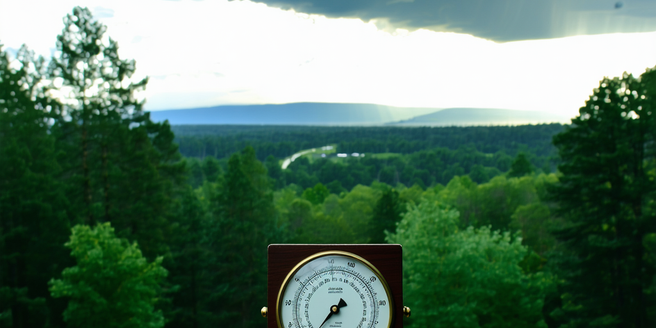
The Basics of Atmospheric Pressure
Atmospheric pressure is the force exerted by the weight of air in the Earth’s atmosphere. It is measured using a barometer, often reflecting how weather patterns will shift. High pressure indicates a larger volume of air above an area, while low pressure suggests the opposite. Air moves from areas of high pressure to low pressure, creating wind. Temperature and altitude influence pressure levels; for instance, pressure decreases with altitude as there is less air above us. Understanding atmospheric pressure is crucial since it affects everything from daily weather to flight navigation. High pressure usually brings fair weather, while low pressure can lead to storms. Recognizing pressure changes is essential for forecasters to predict conditions reliably.
How High Pressure Systems Influence Weather
High pressure systems are significant in shaping weather patterns. These systems are generally marked by descending air that inhibits cloud formation, leading to clearer skies and calmer weather. They can stabilize atmospheric conditions, reducing the likelihood of precipitation and storms. Often, high pressure systems are large and can persist over regions for extended periods, blocking weather systems behind them. This stalling effect can lead to prolonged periods of sunny and dry conditions, known as a ‘blocking high.’ In some cases, they can also cause heatwaves if they occur during warmer months. Moreover, these systems can redirect other weather patterns, such as steering hurricanes away from certain areas or concentrating weather phenomena like monsoons.
The Role of Low Pressure in Storm Development
Low pressure systems are at the heart of storm development. When warm, moist air rises, it creates an area of lower pressure at the surface. As this air ascends, it cools and condenses to form clouds and precipitation. The difference in pressure can draw in winds from surrounding high-pressure areas, intensifying storms. The swirling motion of these winds can often lead to a well-structured storm system. Common examples include cyclones, hurricanes, and tornadoes, which thrive in low-pressure environments. These destructive weather systems usually bring strong winds, heavy rain, and can cause significant damage. Understanding the dynamics of low pressure can help meteorologists predict the development and potential impact of storms. Monitoring changes in pressure assists in early storm warnings, crucial for public safety.
Impact on Climate and Environment
Air pressure systems influence climate and environmental conditions globally. Persistent high pressure in a region can lead to drought conditions by preventing precipitation, impacting agriculture and water resources. On the other hand, continued low pressure areas can result in excessive rainfall, flooding, and erosion. These systems also affect ocean currents and temperature distribution, playing a role in larger climate patterns like El Niño and La Niña. Understanding how these patterns interconnect is crucial for both short and long-term weather forecasts. Meteorologists continuously study these patterns to improve prediction models. Understanding these pressure differences is vital for climate modeling and forecasting long-term climatic changes. Human-induced climate alterations, through changes in pressure systems, may exacerbate severe weather, highlighting the interconnectedness of pressure systems and broader environmental health.
Human Activities and Pressure Systems
Human activities significantly influence atmospheric pressure systems. Urbanization leads to the ‘urban heat island’ effect, where concrete absorbs heat, affecting local air pressure and circulation patterns. Industrial emissions contribute to climate change, which alters global pressure systems by changing temperature distributions. Deforestation and land use changes also modify local climates by changing surface heat absorption and moisture levels, thus affecting pressure. The cumulative impact of these factors can significantly alter meteorological patterns. Conversely, renewable energy projects, such as wind and solar farms, may influence local pressure systems by altering surface-air interactions. Understanding these interactions is crucial for developing strategies to mitigate adverse environmental impacts, as human activities increasingly alter natural weather and climate processes.
